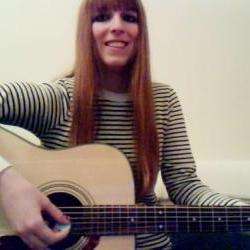After four and a half hours of glacial, repetitive, soporifically quiet music... the crowd goes wild! This was the scene at Issue Project Room on Sunday evening as three members from the Either/Or Ensemble concluded Morton Feldman’s monumental trio For Philip Guston and, after a weighted silence, the packed house burst into whoops and applause.
This was the third time I had witnessed a rarely-programmed extremely long work presented by Issue Project Room (the first and second being Dennis Johnson’s November and John Cage’s HPSCHD) and the venue hasn’t let down yet in their adventurous yet rewarding performance schedule. And judging by the loudly enthusiastic reaction, I feel certain that the other listeners would agree with me.
The trio for flute, piano, and percussion, dedicated to Feldman’s painter friend Philip Guston, is one of the composer’s late “very long” works, composed in 1984, when he had shifted from a focus on graphic notation to an interest in quiet sounds. Each musician, therefore, read from their own monstrous score characterized by precise yet asymmetrical overlapping rhythms and tones. At times the sounds were so scattered, so seemingly random, that I wondered how on earth they were even managing that one section, let alone nearly five hours of the same. Other times, a phrase might be echoed a split second later by one of the other musicians. And occasionally, the opening four-note phrase would rematerialize, like a clock striking the hour. Every iteration felt familiar, but as time wore on - and the concept of “time” became much hazier - the repetition took on a life of its own, evolving and ripening even as we completely lost track of time.
While navigating the work without a single break, the musicians were also transitioning from instrument to instrument without missing a beat. Flautist Margaret Lancaster deftly switched between flute, piccolo, and alto flute. The piercing, longer repeated notes on the flute contrasted with chirruping piccolo phrases and slurred alto flute lines. Meanwhile, Richard Carrick shifted from the piano to celeste, occasionally playing piano with his left hand and celeste with his right. His notes were strung together into exquisitely-distributed tapestries of sound that were both scattered and stacked into intricate chords. Finally, on the other side of the space, David Shively was surrounded by various percussion instruments. He punctuated Ms. Lancaster’s alto flute phrases with pings of the glockenspiel, interjecting ceremonial-sounding patterns on the tubular bells, and striking delicate, rapidly-repeated notes on the marimbaphone in the hushed opening of a new section.
Despite such a vast sound-world, the sounds themselves remained extremely quiet throughout. Joined by the occasional snore or sneeze from the mesmerized audience, the notes twinkled through the space, falling together into a blanket of vaguely dissonant, occasionally consonant fibres draped across our consciousnesses. Each phrase or idea was revolutionary upon its introduction and then grew almost static in its exploration, before eventually trailing off and getting replaced by new phrases and new ideas. Although repetition played such a large part in the performance, there was never an element of anticipation or expectedness. In the absence of conventional time, we were swept along from pointillistic gestures to seemingly accidental moments of sheer beauty without knowing what was coming next or when it would all come to a close. Perhaps this was why, upon the eventual conclusion, the audience reacted with such fervor. We weren’t clapping for a cathartic release or anticipated cadence. We were cheering for musicianship - and endurance - at its finest, and composition at its most enduring and extraordinary.


